
The Ultimate Guide to Marketing Your Startup In Year One
If you’re researching how to market your startup, odds are you’re finding lots of information about marketing plans that require big teams and equally big budgets. But as a startup founder, you know neither of those are realistic for your business.
Well, it ain’t easy going it alone — that’s for sure. But it’s not impossible. And if you’ve already launched a startup, you’re no stranger to making things happen.
We’re here to tell you that marketing your startup brand is no different. In fact, one-person startup marketing plans can be more authentic, personalized, and effective than big-budget strategies that cast a wide net with no real connection to the audience they’re trying to capture.
No matter how motivated you are (and you’re an entrepreneur, so we know you’re motivated), startup marketers have a common dilemma: limited resources. Human, financial, you name it — startups are typically doing a lot with a little, at least in the beginning.
So how do you make it work without the cash and the people larger companies have to implement their marketing plans? You’ve got to make the most of what you do have. With the right approach, your startup’s resource dilemma can be what inspires you to find creative ways to successfully reach your customers and build your brand.
As I learned in my first startup, growth is an engine. And once it’s up and running, you just have to keep adding fuel and test different ways to accelerate and scale that growth.
Besides revenue and growth and getting new customers, you know what else is important in year one: cash flow and predictability. A couple of bad months could break you – particularly if you’re a bootstrapped startup.
This means it’s key that your startup marketing plan isn’t reliant upon hiring more salespeople and spending money on ads no one wants. Startups need to find those cost-efficient marketing approaches that are proven to get that growth engine going without breaking the bank.
And it doesn’t happen overnight. Growth requires small, incremental improvements over time. And that consistent improvement multiplied over time delivers massive compounding “hyper growth.”
Let’s take a look at what else you should be doing and link you to some pretty awesome resources that will talk you through each step in more detail…
Identify and Understand Your Audience
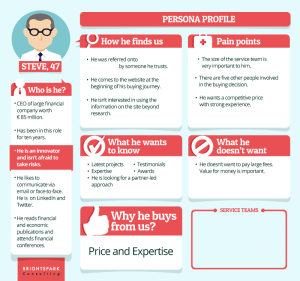
Before you can do anything else, you need to know who you’re marketing to – it’s the only way you’ll be able to target them effectively.
If you’ve done your market research, you should have a pretty solid idea of your target audience – however, you can, and should, do much more to ensure you truly understand your audience and what makes them tick.
How To Build Your Buyer Persona (Infographic)
Building a crystal-clear picture of your typical customer is key to devising a strategy that works. This is an article I earlier this year that lists the recipe for building buyer personas that work.
20 Questions To Ask Your Target Customers
This article from Hubspot defines the 20 most important questions you should be asking your target customers in order to create a profile of their pains, challenges, wants and needs.
Knowing Your Audience: 7 Questions To Get to Know Them Better
Knowing your audience is central to any marketing strategy. So how do you get to know them? MarTech Columnist Timothy Carter discusses seven ways to learn more about your target audience so your marketing attracts the right people.
10 Ways Predictive Analytics Can Help You Achieve Your Marketing Goals
One effective way to build unique experiences for your customers is by using predictive analytics. Using critical consumer data can help you understand how your audience is engaging with you and how you should adjust your strategy in line with this.
The Ultimate Guide To Startup Marketing for SaaS
SaaS startups face several challenges when marketing their services to prospects. From brand name awareness, to lead generation, marketing your SaaS business requires maximum ROI for the lowest cost.
That’s why SaaS companies win with content marketing. The results are measurable, and the costs are low. It’s also why we use a SaaS-based model with our own content marketing. Small but steady investments can produce big gains, no matter how saturated your market might feel.
Set Goals
The best-performing marketers set tangible, achievable goals for themselves and their campaigns. They do this because goals help them (and their team) focus their efforts, understand what they’re trying to achieve, and measure their results.
In your first year, the goalposts might be changing regularly. This means you’ll probably want monitor your progress and adjust goals accordingly at close intervals.
How to Set Marketing Goals You Can Actually Achieve
Set the bar too low, and your team might not be pushed to do their very best. Set the bar too high, and failure to achieve goals can damage morale. Getting the balance just right is key to maximizing results.
Okay, here we won’t bore you by giving you the standard lecture about SMART goals or BHAG. You know all about them.
How to Set Marketing Goals Based On Business Goals
Your marketing goals are intrinsically tied to the goals your business is striving to achieve, but setting goals isn’t as simple as saying “We want to grow our business and make more money.” That part is obvious. This article shows how to tie the specific goals of your business in with the targets you set for your marketing campaigns.
The Affordable Guide To Content Marketing for Startups (KPIs Included)
The startups we work with love to share their passion with customers by providing them with exceptional products or services that they will love. But, to get customers on board, you need to build a brand that is going to create interest and instill loyalty in your startup. You must maximize your brand storytelling but you also need to be accountable to the right KPIs. This article will help.
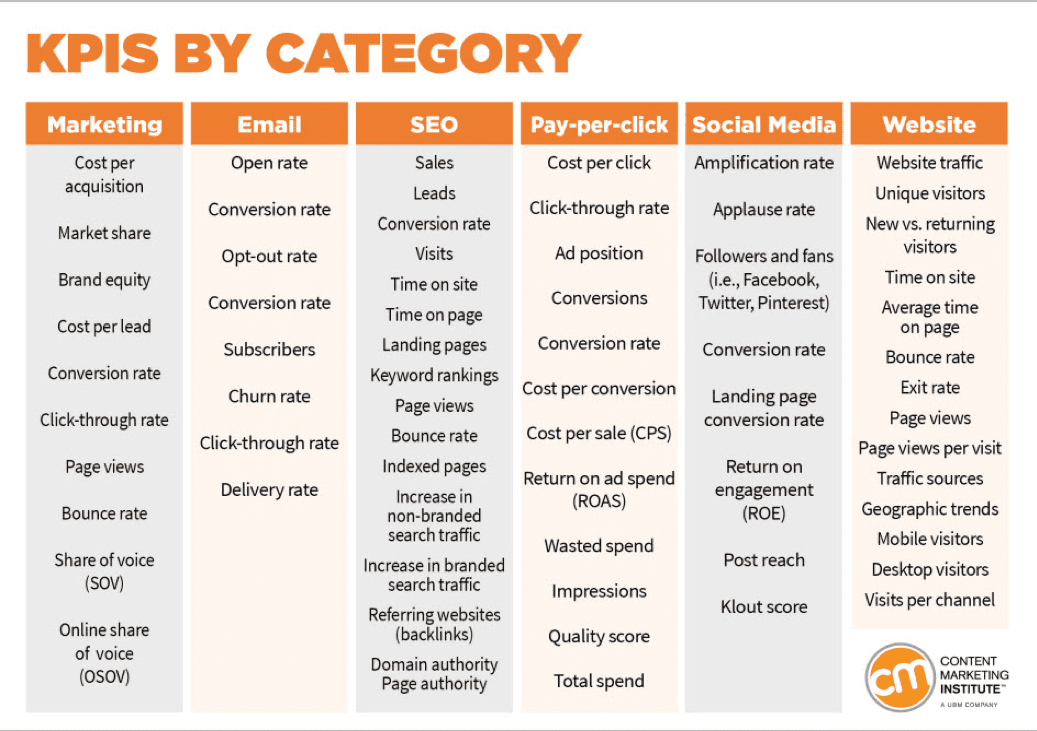
Break Your Goals Down to Make Them Manageable
It’s great to dream big, and everybody should start there. You can’t start something amazing without first envisioning its potential.
In a few years, you could be turning $1 million in profits, employing a staff of 20 people, or be outfitting your premises with an 80 foot tall aquarium (yes, that actually exists…)
Picture whatever you want. It’s fun and motivating.
But after that, if you want to have a shot at realizing those lofty goals you dreamed about, you need to begin by breaking them down into a series of smaller, more achievable targets.
In other words, you need a strategy.
Compare it to losing weight. If you decide to try and lose weight, there’s a good chance you have a big, juicy target size or weight in mind. But in order to get there, you’re going to need to assign yourself a much smaller goal – like losing 1 pound a week.
You’ll also need to lay out strategies that’ll help you achieve those goals, such as changes to the way you eat and how much you exercise.
If you simply said “I want to lose 20 pounds so I’m going to eat less,” you probably aren’t going to get very far.
Marketing your startup isn’t all that different. You need to start small. Be specific with your goals and the strategies you’ll use to achieve them.
My initial goal with Content Marketer was to make a few million with it. Granted, my end goal still is.
I knew I was looking well into the future with a goal like that, but I needed to imagine how big this thing really could be in order to motivate myself to make it happen.
Once things were up and running, I shrunk that goal to “make one million.” That’s still a lot though, isn’t it? Especially for a complete startup. So I changed the goal again, to “get 1,000 satisfied customers.”
That’s sounding far more achievable and tangible. Since I know how much a customer is worth (churn rate accounted for, I need around 2,500 customers to break the million dollar barrier), I can focus on getting those customers and keeping them happy. I’m setting myself a goal that I can actually work towards.
But I didn’t stop there.
In the end, I made my initial goal “get 100 extremely happy customers.” That’s not going to set me up for retirement, but it’s something I should be able to achieve within a few short months. After that, I can aim for 1,000 customers, then move onto $1 million in revenue, then…. $5 million. Because I set my goal small I was able to acquire 100 new customers in the first 12 days & 1000 new customers in 7 months. Now I’m off to hit my next goal of 5000 customer.
And after that? I’ll worry about that later. The key here is to dream big but start small and work your way up.
Establish Your Presence
First thing’s first — you’ve got to get established on the market. Your website is the most important contributor to your brand’s credible digital presence, and your digital presence is the key to building brand awareness and a customer base.
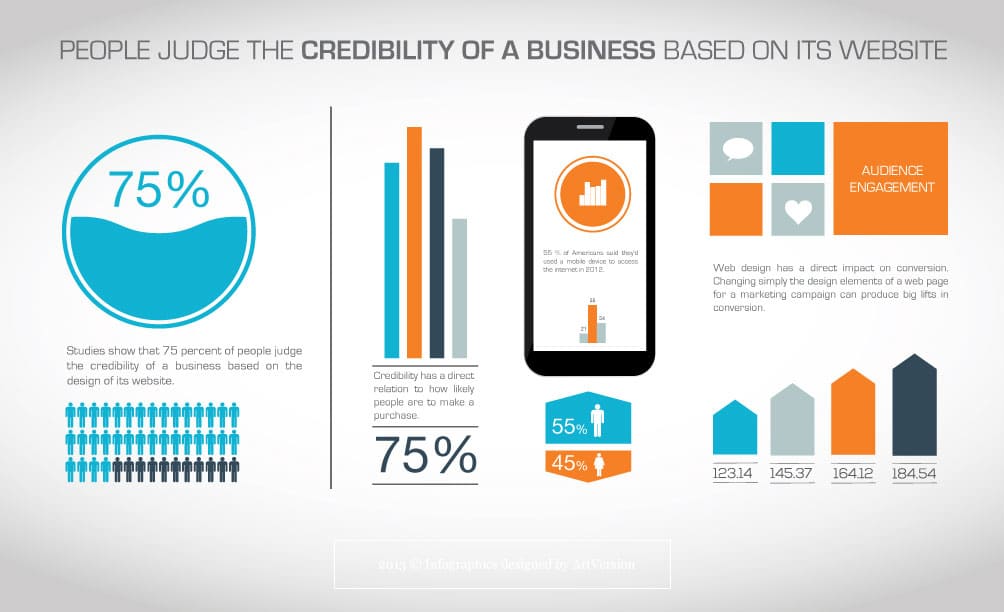
Remember, your website is the main place you’ll drive inquiries, search traffic, and social media followers to learn more about what your company does, so it should be a compelling and accurate representation of your brand. Your website should provide the look, feel, and message you want your potential customers to receive when they’re considering your brand.
To get your website up and running, you’ll need to:
- Choose a web host and content management system (WordPress is a top choice for startups and small businesses, but there are lots of options out there)
- Pick a domain name that is easy to remember and spell (use the KISS rule — keep it simple… okay, the KIS rule)
- Be sure your design aesthetic aligns with your brand vision. Many CMS systems have templates you can start with, but when you can, work with a professional designer to really make your website shine visually.
- Make your content concise, compelling, and customer-focused. People only read about 20% of the content they see on any given page, so make your most important messages easy to see, use clear calls to action that tell your customers how to connect with you, and enhance your web content with images and videos to make it more memorable.
Spread the Word About Your Startup ASAP – Don’t Wait Until Launch
What if you could have a list of 1,000 potential leads before you even launched? Don’t wait to start marketing yourself, and you could.
That’s what I did with Content Marketer: I started blogging about it on sujanpatel.com, mentioning it on my guest posts, and promoting it on twitter as soon as the initial landing page was ready, even though this was quite a while before we actually launched.
By the time we officially went live, we already had a 307 beta users and 3590 qualified leads on our email list.
If you want to do the same and start marketing your pre-launch startup, you could:
- Write guest posts for industry publications that’ll allow you to incorporate mentions of your new venture.
- If this isn’t your first (or only) business, you can start blogging about it (or incorporating mentions of it) into posts on your other blog(s).
- Start talking about it on social media/building your social following.
- Run a competition (tie the winner announcement into your launch).
- Find a newsworthy hook and get a press release into circulation.
- Use the best tools for startups to find people with a problem you’re soon going to be able to solve, and turn them into prospects.
It can also help to…
- Create a little mystery. Drum up interest by giving away just enough information to spark intrigue. Don’t tell the whole story just yet.
- Promise a special price to people who sign up to your mailing list before launch. Reward those who give you their trust early on.
Build Hype in the Months Leading up to Launch Day
If the old saying “prior planning prevents poor performance” is true for anything, it’s startups. Chances are, you’ve been prepping for months – or even years. When the day comes that your brand hits the market, building hype beforehand is crucial to ensure your operations start off strong.
The success of Starbucks VIA Instant Coffee was in a large part due to its extended pre-launch campaign and involvement of people in tasting tests. The campaign wasn’t just digital; they also ran a print ad:

And they stuck steadfastly to their plan, inviting over 4 million people to taste their product over a period of two years, at the end of which Via became the 5th best-selling instant coffee in the U.S.
If you plan on producing a good deal of content once you’re up and running, your goal should be to get as many people to sign up for your newsletters and promotions as possible. A great way to do this is by offering a bit of incentive in return for email addresses.
Agreed, you might not have Starbucks’ budget, so a cheaper and leaner alternative to large scale advertising would be to hold giveaways on social media or other popular platforms.
This will do a lot to build rapport with potential customers early on, while keeping costs low. If you offer a prize, be sure it is something that holds true value. For example, depending on your business, you could offer things like a free trial or discount code for your product, access to your research, or free tickets to an industry event. Just be sure it appeals to your entire target demographic and has the potential to draw traffic to your site or app.
At the end of the day, you only want to release small tidbits leading up to the launch. The trick is giving out the perfect amount of hints and details, without killing anticipation.
Dive Deep into Social Media
Social media is the next step to getting your brand established online, and the best way to directly engage with your customers.
There is no one-size-fits-all approach to social media marketing; platforms have different capabilities and user demographics, and while it’s good to have a multi-platform presence, you don’t have to utilize every single one just because it exists.
As all marketers and businesses know, social media is a branding tool that can no longer be ignored. With more than one-third of the planet’s population active on social media, one of the best ways for startups to get a stake in the game is by keeping up on what the masses are talking about in relation to their industry.
We recommend you keep a pulse on the latest trends in social media but try and focus on just one or two social media channels as quickly as possible. The biggest insights come from understanding how consumers respond to your brand, and if it helps you to begin building an audience, that’s just a bonus.
When you get a feel for the hot button issues in your industry, you are a) in a much better position to write content that appeals to your niche and b) able to jump into ongoing conversations as a recognized source of knowledge or expertise.
Using the right social media monitoring and listening tools, you can pinpoint trending topics by targeting certain keywords, brand names, or industries on social networks. Consequently, you will learn how to frame your posts and content in ways it best speaks to the interests of the people you are trying to reach.
Gatorade and other companies have been known to set up and operate war-room like Social Media Command Centers in order to monitor and respond to mentions of their brand in real-time.

Using such systems, brands can keep a close eye on every single conversation that alludes to their brand, competitors, people (such as brand ambassadors) associated with them, as well as the industry in general.
From here, they can zero in on the conversation-heavy topics in their industry’s social sphere, based on which they can run detailed analysis on how to tweak their content to be as compelling as possible.
Further, identifying the right influencers who are a good match to the focus of the content can do wonders to market the brand to a diverse audience. Reaching out to these influencers is, however, a very difficult task. The most important thing to keep in mind is that you need to present a plan in which both parties have something valuable to gain.
Eventually, your aim should be to showcase your expertise to a point where you become an influencer with your own following.
The bottom line is that people are always talking on social media. Jumping into relevant conversations and offering solutions is one of the most reliable ways to get your name and keep it out there.
When you’re creating your social media strategy, think about:
- Who your customer is and which platforms they use
- The kinds of content you’ll create and which platforms support it best
- Creating easy-to-remember handles that include your brand name
- How you’ll manage your posting schedule and measure engagement
Creating a content calendar is important because it helps you manage and balance the timing, topics, and tasks involved with keeping your social media active. There are several useful (and affordable!) software tools you can use that automate posting and track both post and platform engagement metrics.
Remember, too, that it’s always better to do a few platforms well than every platform poorly. A good best practice is to start small and scale up. Focus first on the platforms that best serve your brands and your customers, then build out your schedule and content as it’s manageable.
Here’s a quick cheat sheet to help you decide which platforms to start with:

All said and done, social media only accounts for around 2% of company website traffic and even fewer leads. Even e-commerce companies only get less than 5% of sales from social media and most of that is paid. So make sure you have the right expectations from social media.
Social media is important for your business. But it is not enough to drive your growth. So don’t make the mistake of investing in social media until you have a solid content plan in place. One mistake we see all the time with startups is they go hire a young kid or an agency to post on social platforms before they even have a content marketing strategy.
The Beginner’s Guide to Social Media
Here’s another seriously awesome guide from those same wonderful people at Moz who brought us “The Beginner’s Guide to SEO.” This time, you’ll learn about the value social media offers, best practices you should follow, how to measure success, and which channels you should be using.
Fake It Until You Make It
In its early days, Reddit’s founders Steve Huffman and Alexis Ohanian created hundreds of fake profiles, which they would then use to submit links to the site.
The idea was to make the site appear popular and, therefore, more enticing, to new, real users.
There’s no doubt that it worked…
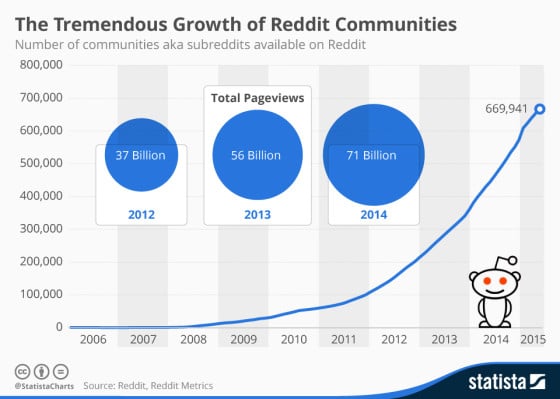
That’s pretty clever stuff. Is it completely, 100% ethical? Maybe not, but what advertising isn’t at least a little misleading? It may not be right, but it’s just the way the world works.
Unless you’re publishing fake reviews or testimonials (don’t do that), all you’re effectively doing is preempting the consumer’s need for social proof – the reassurance that comes from knowing they’re not alone in their choices.
You don’t even have to claim customers or users exist where they don’t: if you can design an ultra-slick, professional website, and keep it populated with content, you can create the feel of an established, successful company – no dishonesty needed.
Perform Keyword Research
Keyword research ensures you target the right keywords on the right pages of your site.
It also plays a key (pun not intended) role in understanding your market. It should be a priority in every startup’s marketing plan.
Many marketers’ go-to keyword research tool is Google’s own Keyword Planner. That’s fine – Keyword Planner’s a great tool – but it’s only really useful for identifying generic, head terms (and terms that are very closely tied to your original search).
There are many more layers to a good keyword strategy. The articles below will help you dig deeper, discover how your audience thinks, and uncover the questions they’re really asking.

Keyword Research: The Definitive Guide
Spanning seven chapters, Backlinko’s definitive guide to keyword research will take you through the basics, show you how to use keyword tools including Keyword Planner (and how to understand its limitations), help you identify long-tail keywords, and demonstrate the importance of commercial intent and keyword competition.
10+ Keyword Research Tools for SEO
This article takes a look at 10+ tools, at various price points, which can help you execute keyword research for SEO.
Create Great Content
Content marketing is the most effective way to build an online audience for your brand. When you create good content on a consistent basis, you drive organic traffic to your website and establish your brand as an expert and thought leader.
It’s also cost-effective; on average, content marketing costs 62% less than traditional paid advertising channels while generating 3x as many leads.
It’s important to remember that content marketing is different from plain old content: it is totally customer-focused and addresses topics, questions, and needs related to your brand that your customers care about.
Here’s what to keep in mind when you’re developing a content marketing strategy:
- Your blog should not be the only part of your content marketing strategy. It involves a comprehensive sharing strategy through multiple digital channels like video, social media, and email.
- Consistency is key; just like with social media, managing your content topics and publishing schedule with a content calendar will help you stay on track.
- Use SEO to optimize your content for search engine traffic; 93% of all online experiences start with search engines. When people search for products and services like the ones you offer, you want your brand to appear at the top of the list.
Content marketing has impactful benefits that can truly transform your brand reputation and position in the market.
It builds consumer trust, perhaps the most important contributor to customer conversion. It also creates a snowball effect; once you begin to build a library of valuable content, your brand presence gets bigger and your content serves as a foundation for its own growth.
Optimized content can rank in the search results and drive qualified traffic to your site. Shareable content can be promoted and drive links. Conversion content can target visitors at every stage of the sales funnel and turn a potential customer into a real-life, revenue-driving customer.
In short: content helps your site grow. Without it, you risk your website stagnating.
Best of all, a content strategy doesn’t have to cost the world. The little guys can — and do — compete.
Before you do anything else, you should probably come to grips with what content marketing actually is. In this article, I try to show you what it is, what it isn’t and also how to show others how it is different from what most brands do (promote themselves).

The 12-Month Content Marketing Strategy for Startups
When you start a business, there’s a lot on your mind: how to fund all the equipment you’ll need, how to keep track of revenue and expenses, how to produce your goods and services economically enough to make a profit, and how to get the word out about what you offer. A content marketing strategy? Yeah it’s important. So we’ve got you covered.
In this article, we show you the importance of consistency in making your content marketing effective. How often is enough to start showing results. This is the research that led us to the founding of our blog subscription service.
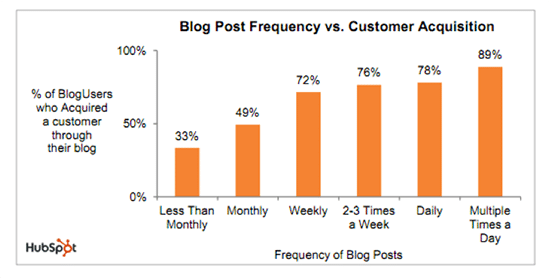
How To Write The Perfect Blog Post
This article demonstrated everything we learned in writing and analyzing weekly blog posts for nearly 30 companies over the last 3 years. This includes the 20-point checklist we use and the template we recommend for every article page.
Start Blogging Yesterday
You know what they say about the best time to start investing for your retirement? It’s yesterday, last year, 10 years ago!
It’s the same thing with blogging. HubSpot’s research proved that content marketing leads are cheaper than outbound marketing and advertising. And you want to start reaching new people right away.
Too busy? A professional blog writing service can get you a content strategy, annual plan and all the content you need to start bringing in new leads.
Just make sure to have a few lead magnets to capture leads, offer a newsletter subscription to capture emails, and nurture those emails and leads.
Drive Organic Traffic
Organic traffic is free, and once you have it, it tends to remain pretty steady. It’s damn important. Unfortunately, getting your site into a position where it will receive a good amount of organic traffic isn’t easy. It usually involves a heavy-handed combination of technical fixes, on-page optimization, and an off-page strategy designed to drive links.
It also takes time.
SEO doesn’t reach completion in a week, a month, or a year. It’s an ongoing process that really should continue for as long as you want traffic to come to your site. Here’s one example of a client that saw steady and then massive growth in the 6th month.

Moz’s epic “Beginner’s Guide to SEO” has been read more than 3 million times. It’s no mystery why: it’s awesome. It’s also updated regularly, which, in an industry that changes shape as fast as SEO, is really important. Read it. Bookmark it. Read it again in 6 months.
How Content Marketing Impacts SEO Rankings
Your content strategy is the key to getting yourself seen. It drives traffic to your site, increases conversions, and strengthens your brand.
Creating blogs that rank, and rank well, isn’t easy — but it’s not impossible. This article covers how to write and rank content that customers and search engines will love.
9 SEO Best Practices for Blog Traffic Conversion
These are the tips and approaches to SEO that evert startup should use to grow blog traffic, gain awareness, get more leads and oh, without spending money on ads.
How To Find and Fix Common Website Issues
You’ve built an amazing website. This article shows you how to optimize your website content for traffic, rankings, leads, and sales. You’ve invested so much time and energy into launching your new website and brand, so now it’s time to make sure it’s working for you.
Leverage (and Smartly Incentivize) Reviews and Referrals
Speaking of consumer trust, let’s talk about the #1 most powerful tool for establishing it: customer reviews. 94% of people say they would recommend a brand after rating their experience as “very good,” and 93% say they read reviews before making a purchase.
Positive reviews and referrals also go a long way in establishing credibility for a startup just beginning to build its customer base and reputation.
Here’s how you can leverage reviews and referrals:
- Ask for reviews from your customers; 68% of people say they’re willing to provide a review or testimonial when asked.
- Make reviews and testimonials on your website, especially on product or services pages.
- Ask customers to add reviews right to your social media channels so others can see them.
- Write case studies and feature stories on your website to showcase real examples of how your brand gets results.
- Reward customers for recommending your brand with referral incentives like discounts on future purchases.
Not only are referrals a really cost-effective means of acquiring a new customer, but the Wharton School of Business found that a referred customer actually has a “16% higher lifetime value.”
With that in mind, you might assume that, if your product’s good enough – and your customers are happy enough – they’ll naturally go on to tell their friends. The stats prove otherwise.
Even though a customer might be willing to refer their friends, the reality is they probably won’t.

Thankfully, the solution here is pretty simple: you have to give your customer a reason to refer a friend. In other words – an incentive.
Is this going to cost you? Of course. But it’s worth it.
Let’s say you own an SaaS company selling a tool that costs $29.99 a month. Let’s also say you have 100 customers, with an estimated average lifetime of 12 months. That makes the average LTV of your customers $359.88.
What would happen if, as an incentive to these 100 customers, you offered them one month free in exchange for every new referral they made that resulted in a paying customer.
Naturally, they won’t all take you up on the offer, but even if just a quarter of them refer one friend each, that’s a potential $8,997 in revenue – all in exchange for a $749.75 investment.
Not bad, eh?
Set the Right Price
Setting the right price is key to maximizing your customer acquisition and retention, and – most importantly – profit. Pricing isn’t a marketing strategy per say, but you’re going to struggle to market your business effectively if you get it wrong. It’s also a critical part of getting a new business off the ground – especially when you’re operating on limited funds.
In fact, small changes to your pricing can make a massive difference to your profit: research from the Harvard Business School found that a “1% improvement in price increases operating profit by 11.1%.”
But what is the “right price?”
This isn’t an easy question to answer. Set your price too low and, while you might not have any problems acquiring customers, those customers may in fact be willing to pay more. If that’s the case, you could be losing a lot of potential revenue. And you certainly wouldn’t want that.
That said, although it might seem counterintuitive, a low price won’t necessarily increase customer acquisition. It can (and may very well) inadvertently alter how consumers view your product.
James Noble did a good job of describing the phenomena in a piece for Kissmetrics: “A low or discounted price implies you have a lack of faith in your own product or service – particularly if it is ‘high-end’ – and if you don’t believe in your product, why should anyone else?”
In other words, set too low a price, and potential customers may be dissuaded from converting simply because they believe that if the price is low, the product must be crap.
It all comes down to the age-old saying that “you get what you pay for.” In many cases, that’s true, but there are no doubt exceptions to the rule. Cases do exist where a bargain really is a bargain – they’re just the minority.
Unfortunately, by pricing too low you play into ideas about value that are ingrained into our subconscious, and you may well suffer for it.
This is especially true for SaaS companies that are selling a completely unique product (or, for that matter, anyone who’s producing and selling their own goods). Things are a little different if we’re talking about resellers of products – in such cases, price is a huge (and often defining) factor in their success.
So what happens if you set your price too high?
There’s no real surprise here: charge more than people are willing to pay and they simply won’t pay it.
The real question though, is: how do you find that elusive “optimum” price point?
Analyze your competitors’ pricing
While your competitors’ pricing should never define your pricing strategy, it’s naturally a pretty good place to start.
Just remember that price isn’t everything (far from it). Take the time to make sure you fully understand how their product actuallycompares with yours.
Once you have a thorough understanding of what you’re up against – both in price as well as features and benefits – you’re ready for the next step…
Talking to potential consumers
Who better to talk to about what people are willing to pay for your product than the very people who are likely to dip their hands in their pockets and buy it?
You can approach this whichever way you want: surveys, polls, email outreach, or one-on-one chats with peers that you know and trust. The important thing is that you talk to enough people to get an accurate understanding of what people are willing to pay for your product.
However, instead of simply asking “how much would you be willing to pay for this product?” you might want to try employing Van Westendorp’s “Price Sensitivity Meter” technique (or at least, your own variation of it).
The technique involves four questions:
- At what price would you consider the product to be so expensive that you wouldn’t consider buying it? (Too expensive)
- At what price would you consider the product to be priced so low that you would feel the quality couldn’t be very good? (Too cheap)
- At what price would you consider the product starting to get expensive, so that it’s not out of the question, but that you’d have to give some thought to buying it? (Expensive/High Side)
- At what price would you consider the product to be a bargain – a great buy for the money? (Cheap/Good Value)
Framing the question this way enables you to determine the perceived value of your products – something you can’t achieve if you simply ask “how much would you pay?”
Have a Growth Hacker Mindset
Growth hacking is a concept invented by startup founders who needed to rapidly grow their businesses on limited budgets. In short, growth hackers continually seek out opportunities and look for tricks that help their businesses grow.
Here’s where growth hackers focus:
- SEO optimization – Google’s algorithms change often, and growth hackers stay up to date on how to keep their content SEO optimized.
- Viral content – It’s hard to predict what exactly will make a piece of content go viral, but growth hackers are in the know about social trends and work to give their content its best chance at virality.
- Data analytics – Data analysis gives you an objective story on how your content is performing. It tells you what’s working, what’s not, and where small adjustments might make a big impact.
- Innovative ideas – Growth hackers aren’t afraid to experiment, get creative, or be the first to try new strategies and tactics.
- Goals and metrics – The key to evaluating your marketing plan’s success is establishing what success looks like using measurable goals and metrics.
Most of all, growth hacking requires continual agility and adjustment. Here’s how Dropbox made a small growth-hacker tweak to their revenue model that yielded big results.
Start Branding and PR from Day One
The explosion of the internet has changed PR practically beyond recognition.

Today, digital PR is just as, if not more important than, offline PR. Executed correctly, it can be a significant driver of links and traffic – it’s not just about press coverage and brand visibility anymore.
However, what marketers need to remember is that while PR can be a great way to build your brand and supplement your SEO strategy, it doesn’t tend to be a direct driver of sales.
While that might be discouraging to the C-Suite, good marketers should know this doesn’t mean PR is not worth investing in. There are many things that make consumers buy, one of which is knowing and trusting a brand. PR can, and should, play an important part in this.
Everything You Need to Know About PR To Do It Yourself
This is a pretty comprehensive introduction to tackling PR yourself, from understanding what PR entails, to key ground rules you should adhere to and what’s actually involved in getting the press to cover you.
Complete Guide to Public Relation Tools
This massive list of 140 PR tools can help support and supplement your efforts.
The Ultimate Guide To Brand Building Your Startup
Making the decision to create your own startup is both exciting and daunting. You are about to bring your passions to life and make a living doing something you love. More importantly, you get to share that passion with customers by providing them with exceptional products or services that they will love.
But, to get customers on board, you need to build a brand that is going to create interest and instill loyalty in your startup. You must
Become a Thought Leader
One of the main hurdles to getting a startup off the ground is establishing a high level of credibility and showcasing expertise. Doing so can open a number of doors for further business growth. Even though many startups strive to achieve leadership in their fields, few know to do it successfully.
There are many ways to market your knowledge to a niche audience. The overarching theme lies in producing quality content. A great way to prove you’re a thought leader is by creating or hosting webinars; doing this can help you reach a highly-targeted audience that is already interested and receptive to your brand messaging. Putting together a successful webinar can be difficult – your content needs to be tailored to answer specific questions and address the most pertinent challenges consumers in your industry face.
If you want to go a step further than a webinar, try building and conducting an online course that teaches the ins and outs of your industry. Throughout your course, address common misconceptions and incorporate your own personal journey, telling the story of how you became an expert, while providing hands-on experience. If you package and promote your services right, it can lead to a virtuous cycle of visibility and sales.
For example, Michelle Parsley, founder of Elevate Your Art, used course marketing platform Kajabi to create and conduct a number of interactive art courses online, each with different creative approaches. In addition to receiving a great amount of recognition, Parsley’s story was featured on Kajabi’s “Hero Wall,” gaining a lot of personal authority (being a Kajabi hero means you made more than $1000 selling your knowledge on the platform) as well as industry insider connections in the process:
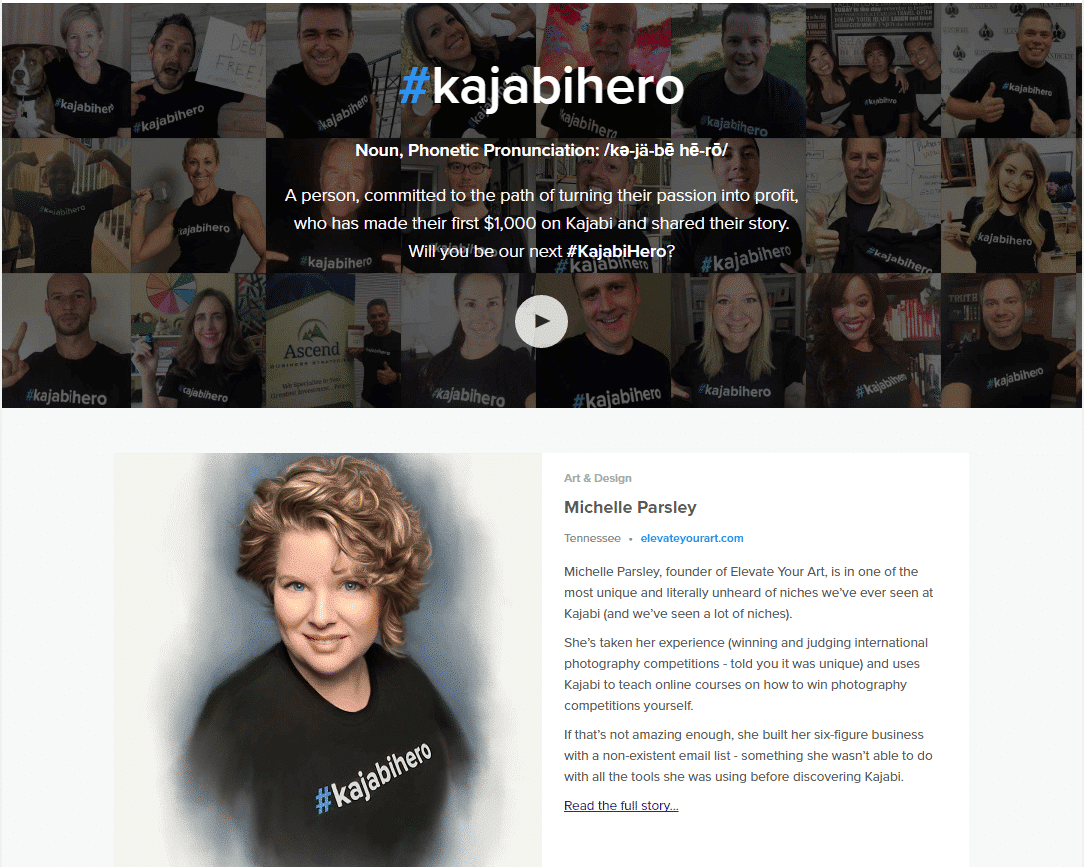
Writing and publishing an ebook is another highly-effective way to expand your educational content library and show the masses that you know a thing or two about your field. The ebook industry is blowing up, even though it’s far from the latest thing in marketing. In fact, ebooks are projected to generate a total of nearly $20 billion by 2018. This is an opportunity to grab a subject by its horns and go far more in-depth than you would with a typical blog post.
Once you have solidified the status as an industry thought leader, you gain a strong aura of credibility and the opportunity to better the lives of your audience.
Minimize Product Friction
Product friction is anything that serves as a roadblock to conversion. As described by di, it has many faces: “It can be micro, like a piece of interface copy that doesn’t make sense or a page where the CTA isn’t obvious. It can also be macro, like a marketplace business that lacks a clear plan for overcoming the chicken-and-egg problem.”
Friction is part and parcel of any business – you’ll pretty much never be able to eliminate it entirely. However, the issue is often exacerbated when businesses underestimate just how littlefriction is required to turn a customer off.
It’s easy for us to look at problems with our product or website and think that, because we can figure out a way to work around them, that our potential customers will too.
That just isn’t true.
Most entrepreneurs (at least in my experience), think of our companies like our children. We see them through rose tinted glasses and believe they can do no wrong.
We have to remember that our customers don’t (usually) see what we see. Don’t underestimate how seemingly insignificant obstacles can affect consumer behavior and drive potential customers away.
Make the Most of Email Marketing
Despite what some people may believe, email still matters.
“While email is a comparatively old, un-sexy technology compared to social media, the rallying cries of “Email is dead!” are simply inaccurate and undoubtedly hurting the bottom line of those businesses who listen.
Email marketing provides the most direct line of communication for turning leads into sales, which is why the savviest entrepreneurs have no intention of giving it up any time soon.” – Help Scout
In fact, data from email analytics company Litmus showed email offers a better ROI than PPC and banner ads, and a higher conversion rate than organic search and social combined.
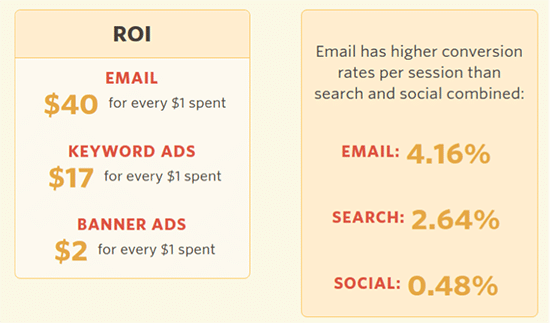
The Essential Guide to Email Marketing for Startups
Email marketing is a vital tool startups should use to reach customers, leads, and investors. Amazing email marketing starts with incredible content – both throughout email and elsewhere. Startups then need to figure out how to distribute all that amazing content in email in order to get and nurture leads.
How to Increase Your Email Subscribers
Getting those first few emails always feels the hardest. Once you’re over that hurdle, here’s 25 tactics you can use to keep it growing.
49 Email Marketing Tips for Beginners
As the name suggests, here are 49 email marketing tips specifically for beginners, focusing on five key areas:
- Getting started
- Content
- Subject line
- Sending your email
- Managing subscribers
How to Effectively Segment Your Email List
You wouldn’t send the same email to your best friend and your grandparents, so why would you put your entire email list into the same box? This article will talk you through eight different ways to divide your email list so you’re sending the right messages to the right people.
It’s been proven to work very well.
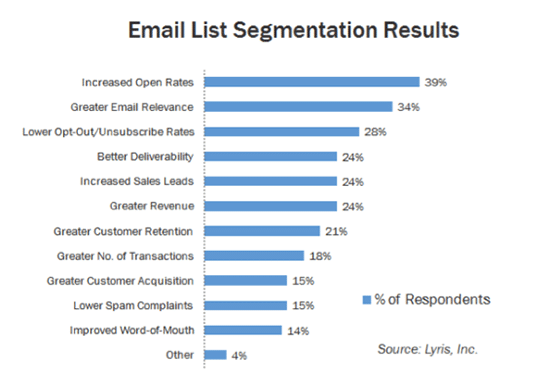
Retain Customers with Relationship Marketing
Relationship marketing is about building long-term relationships with your customers. It’s a more sustainable way of looking at building a customer base, rather than focusing all your efforts on securing that next sale.
I believe that relationships and customer retention marketing is so important and yet it actually is more like the lost art of marketing.
The goal of relationship marketing is to get your customers to want to stick around and keep buying from you. The consequences of this are:
- A higher customer LTV (life-time-value)
- More referrals and free word-of-mouth marketing
If your focus in the first year is to get as many customers as possible, stop, sit back, and take another look at what you’re doing. Chances are it will pay dividends to focus on retaining and keeping a smaller group of customers happy, instead.
How To Use Content Marketing for Customer Retention
However, in today’s world, where we can utilize predictive analytics tools to create highly personalized experiences for customers, it’s critical to focus on delivering value over making a sale or focusing too much on cost.
Providing real value today and consistently into the future will help you connect with customers on a deeper level. They’ll be more likely to remember you, admire you, trust you, and work with your business long term.
How to Rock at Relationship Marketing Like the Best Sales Pros
The best salespeople know that their ability to close a sale rests on their ability to forge a connection with the person they’re selling to. This article details what those salespeople can teach us about relationships in marketing.
Utilize Remarketing
Admittedly, this isn’t a marketing tip that’s going to work if you literally have no money. However, if you’re working on a limited budget and are looking to invest in display advertising, you’re going to see the biggest ROI on re-marketing ads.
HubSpot found that even when ad fatigue is accounted for (which is basically when consumers begin to get bored of seeing the same ads over and over again), CTRs for remarketing ads still outdo other types of display ads:
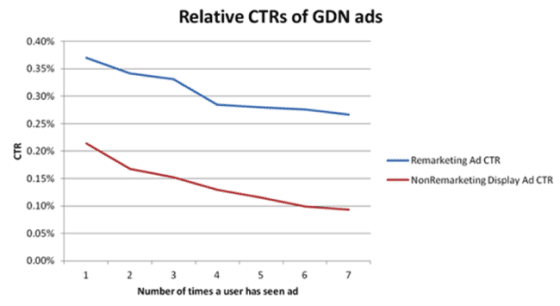
If you’re not familiar with re-marketing, it’s the reason you often see ads for small companies on huge sites, and vice versa. No, your local marketing firm haven’t forked out for ads on CNN or the New York Times. What’s actually happened is you’ve recently visited their website and they’re paying for re-marketing ads – this means you’re going to see them follow you around the web (at least for a little while…).
It works like this:

Re-marketing ads are so effective because they target people that have already been to your site – people who are clearly interested in your business and what you do. Even if they don’t click on any of the ads and return right away, they’re still being fed reminders about your brand, which ultimately help to cement your company in their mind.
Oh, and as a sneaky little bonus, the positioning and placement of these ads can make you seem like a really big brand, even when you’re just starting out.
You don’t have to be an expert in paid search to make it work either; especially if you utilize a platform that can take care of the technicalities.
Just to reiterate: if you’re working with a non-existent marketing budget, or a seriously limited budget, then you’re probably going to want to steer clear of all forms of paid search advertising – at least for now. However if budget allows, re-marketing can be well worth the investment.
And on that note…
Use Bing Ads
I know, I know. I hate to recommend Bing as well, but hear me out on this one…
You won’t get very far with any form of paid search unless you have at least some funds to play with. However, if you want to reap the benefits of pay per click advertising without breaking the bank, you may want to consider giving Bing Ads a shot (as opposed to Google AdWords).
Admittedly, if your only concern is traffic levels, Bing pales in comparison to Google.
However, when it comes to value for money, Bing is the clear winner:
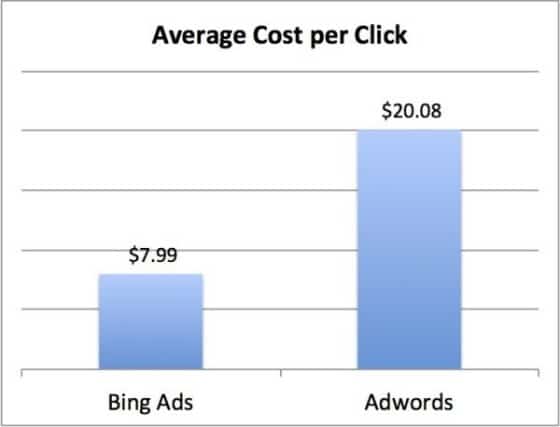
What’s more, there’s even evidence to suggest that visitors from Bing may be more engaged and spend more time on your site than their Google counterparts:
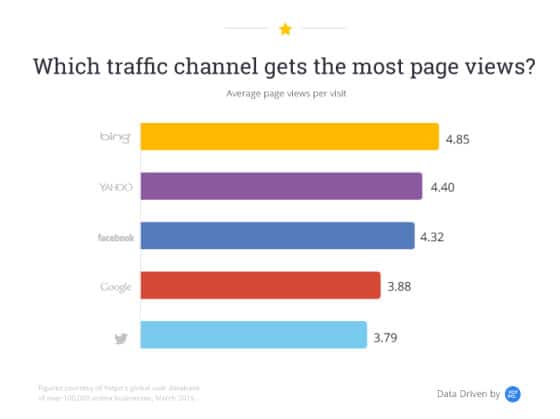
Run Competitions
Competitions are a great way to boost awareness of your brand (and to build your email list or social following) for little to no cash. In many cases, all you need to get one up and running is a product to give away.
Authority Hacker did this and gained this many new prospects:
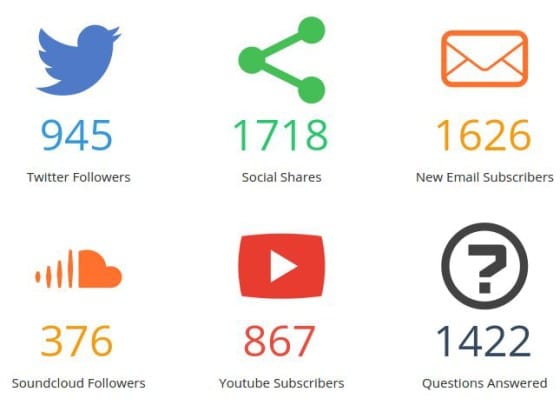
If you wanted to follow in their footsteps, you could…
Run a competition on your own website. This method drives people to your site, which is great. You won’t, however, get the same kind of reach as a competition run.
In a big publication. Lots of publications run competitions on behalf of other brands. The advantage to this is in the potential to reach a huge, untapped audience. Unfortunately, as the contest isn’t hosted on your own site, you may find that a lot (most, even) of the entrants don’t actually visit your website. It’s also worth bearing in mind that some publications will charge you for running the competition, while others will charge you for handing over contact details.
Regardless of how or where you run your competition, here are a few tips to help maximize your ROI:
Be selective about what you give away
The prize should be something you sell – or if, for some reason that’s not possible (say, your product value is too high to justify a freebie) – then pick a prize that your target audience, and only your target audience, would be interested in.
While it can be tempting to give away something that will appeal to as wide an audience as possible – an iPad, for example, or even cash – doing so isn’t going to get your brand in front of the people that will care about it.
Yes, you might get 100,000+ email subscribers or Facebook likes, but those numbers are meaningless if the emails or Facebook profiles belong to people who are simply never going to convert.
Get people to interact with your site in order to enter
The more familiar entrants have to become with your site in order to enter, the more familiar they’ll become with your brand.
For an e-commerce site, this could be as simple as asking entrants to email in with how they’d spend $100. This forces them to interact with your site, and could even result in a purchase. SaaS sites, on the other hand, might want to ask entrants to describe how they, personally, would make use of the service.
The technicalities of the question don’t matter that much – the idea is simply to force the entrant into visiting and using your website so that they inadvertently become familiar with your brand in the process.
Be Generous – Give Stuff Away
If you sell anything that’s tangible and worth more than $50, move on: this tactic only really works with brands that sell low value products – especially startups with small budgets.
If you do sell something that’s low cost enough that you can give away a few without feeling the pinch, however, then please feel free to continue…. this one’s really quite simple.
Step 1. Find bloggers who write about your industry.
Step 2: Contact said bloggers and ask them if they wouldn’t mind receiving a free product from you.
Step 3: When most of them say yes, send said product their way.
Most of the time, the bloggers will write about you and your product. And, most of that time, they’ll even be nice about you. It’s a great way to get eyes on your brand for minimum investment.
They will, most likely, also link to you. However, chances are that they’ll nofollow that link – and you’ll want them to, since a followed link in exchange for a product is considered by Google to be a paid link.
Either way, you’re not doing this to get links – you’re doing it to increase exposure of your brand and your products. And for that, it’s very effective.
Get Some Partners
Partnering with a successful firm that has a customer base to match can be instrumental to your growth.
You don’t have to actually give away a portion of your company – a profit-share or even a commission should be enough to seal the deal. If it’s not, just move on to a company that’s more receptive to the mutual benefits of partnering with a startup.
HubSpot is a prime example of a company that’s making this type of strategy work. Apart from their own marketing efforts, they have a reseller program that’s responsible for 40% of their customers. As a result, they get tons of new sales from their partners’ networks – all without having to do any extra work on their own.
That said, the operative word here is “mutual” – don’t expect something for nothing.
Find a company with shared (but not clashing) interests, and ask them whether they’d be willing to sell your product for a cut, promote you for a profit share, or drive traffic to your site for a referral fee (essentially, affiliate marketing, only this way, you’re in control). The results could surprise you.
Measure Your Success
Let’s expand on that final growth hacker focus area: goals and metrics.
One of the essential strategies behind one-person startup marketing plans is continually knowing what’s working and what’s not. To do that, you need ways to measure your success, which requires establishing what success means for your brand.
Here’s where to focus:
- Website traffic and engagement – These aren’t one in the same. Traffic is how well you’re getting people to click your links and arrive at your content. You can measure it by number of page views, click rates, and unique visitors to your site.
Engagement is how much your web visitors are truly interacting with your content (i.e. how long they’re staying on your site, duration of page or video views, number of pages viewed during a website visit, etc.).
- Social media engagement – Look at metrics like number of followers, rate of follower growth, and average post engagement to understand how well your social media strategy is working.
- Resource allocation – The saying is true: time is money when it comes to growing your startup. Be aware of where you’re allocating your time and financial resources, and be sure those strategies are getting ROI that justifies both.
- Leads, conversions, and sales – Ultimately, the goal of every marketing plan is to acquire customers and increase revenue. Set benchmark goals for lead generation, conversion rates, and sales, then understand how each of your marketing strategies contributes.
Doing so helps you pinpoint where there might be gaps you need to address in your customer journey. For example, if you’re generating many leads but your conversion rate remains low, you know your top-of-the-funnel tactics are working but your conversion strategy needs adjustment.
Implement a Framework for Growth
The overriding goal of every marketing strategy is growth. However… you can actually boost the effectiveness of your marketing by implementing a framework designed specifically to drive it (growth, that is).
Growth is one of my favorite areas. I love implementing strategies to grow my own businesses, and even more, I love helping other companies to grow theirs. From helping one non-profit grow by 5x in one year to helping another marketing services firm double their leads in 6 months, growth is the name of game.
Since growth is sorta my “thing,” I’m going to throw out some ideas for driving growth that we haven’t covered.
Growth Hacking
Growth hacking is a term coined by entrepreneur Sean Ellis in 2010 to describe people and organizations who use creative, experimental approaches to drive fast growth on a budget. Since then, it’s become a marketing industry buzzword and growth hacking strategies are being embraced across industries.
More than ever, it’s clear that organizations of every size, shape, and industry must be innovative and agile if they want to survive, and growth hacking is one way to do it.
As a growth hacker, I love to find tools and tricks to help me find the insights, cheap the system, win new customers – all without spending too much money. So finding and using the right startup marketing tools is one way to get there.
Lead Generation
In order to grow your business, you need to find a way to manage leads. No one wants to chase leads that have no chance of converting.
An Inquiry vs. A Lead: What’s The Difference?
One of the earliest lessons I learned in sales and as a startup marketer was to track the difference between inquiries and real sales leads. We also need to learn to get creative in building more leads. In this post, I talk about some of the more creative ways I have found to get the job done.
Go Forth and Multiply!
There are new brands popping up every day trying to compete for consumers’ valuable attention. As a startup, you will more than likely be fighting an uphill battle in terms of budget and resources. In turn, there will be a lot of pressure to break the mold and show how you are truly unique.
Remember that marketing and making a success of a startup is never easy – whatever the size of your budget. It takes time to build a business from scratch, so don’t get disheartened if things get off to a slow start – we’ve all been there.
According to stats from the SBA, 78% of startups survive their first year, but, 95% fail after five. Even though there is an uncanny amount of brand messaging and content on the web, there are many things you can do to prove that your startup is here to stay. Regardless of the industry in which you are looking to make a name for yourself, there will always be innovative approaches to bring new value and connection to audiences. Stick with the strategies that have worked for you and diversify from the ones that haven’t.
When you’re launching your startup marketing plan:
- Don’t be discouraged by limited resources; instead, remain dedicated to making the most out of what you do have.
- Establish your web presence with a high-quality website and create great content that snowballs to yield bigger and bigger results.
- Know which social media platforms are best for your business. Then, start small and scale up as you’re able.
- Have a growth hacker mindset and continually measure results. Don’t just implement strategies and hope they’ll work — be proactive in finding opportunities, be accountable, and stay agile to make adjustments when needed.
Marketing a startup will always be difficult. It takes a great deal of patience as well as trial and error. Be sure that in everything you do during this exciting time, you are constantly building on the characteristics that make your brand, product, and company unique. As you execute your strategy, keep tweaking your promotional tactics and practicing them day in and day out. Good luck!
What do you think about marketing a startup in year one? Are there any strategies you believe companies definitely should or shouldn’t invest in?

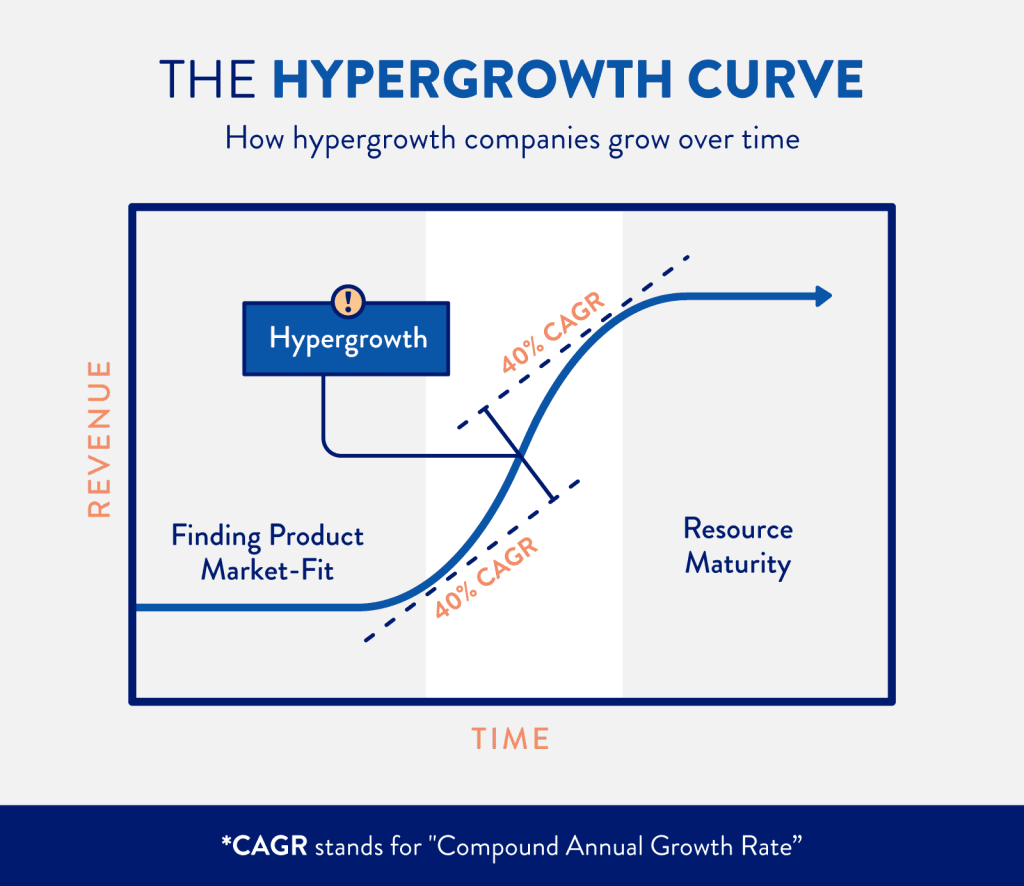
![Use the Tidal Wave Technique to Increase Blog Traffic [Ultimate Guide]](https://marketinginsidergroup.com/wp-content/uploads/2020/06/increase-blog-traffic0.png)




